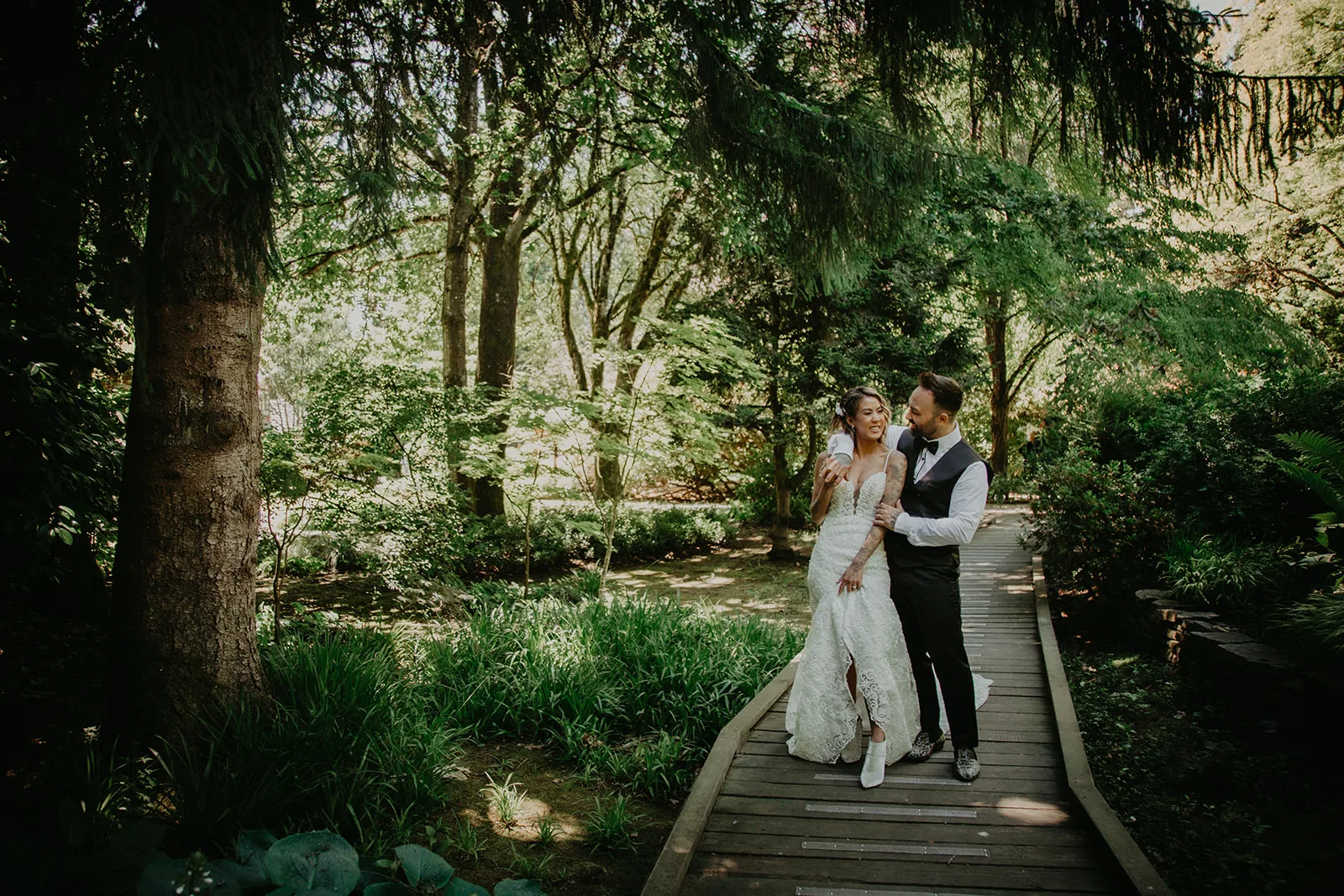If you’re planning a wedding ceremony, you’re likely planning a wedding ceremony rehearsal. (And if you’re not, here’s why you should be.) But what actually happens during a wedding rehearsal? What do you need to bring, who should be there and what exactly are you rehearsing? Find out in our ultimate wedding rehearsal timeline and wedding rehearsal checklist!
PS: Don’t miss our wedding rehearsal FAQs: Learn when and where to have your wedding rehearsal, plus top tips for a smooth rehearsal for everyone!
Wedding rehearsal checklist: What you need to run a wedding rehearsal
Luckily, the wedding rehearsal checklist is quite short. There are only a few things you need for a smooth and successful wedding rehearsal!
Space
While getting to rehearse at your actual ceremony venue is ideal, it’s not always possible. If you’re not able to access the venue for your rehearsal, you’ll need another space to rehearse. Any large space where your group can gather – like a backyard, condo party room or even a park or parking lot – will do!
1 hour
While your wedding rehearsal may not take an hour, it’s a good idea to plan for at least an hour. That leaves some time for people to ask questions or to wait for any late-comers.
Your wedding officiant & wedding planner
Ideally both your wedding officiant and wedding planner (or coordinator) are able to attend your wedding rehearsal and run it together. As the ceremony experts, they’ll be able to facilitate your rehearsal and answer any questions.
Everyone involved in the wedding ceremony
Everyone who is involved in your wedding ceremony should attend your wedding rehearsal. This would be you and your partner, your wedding party, and anyone who is part of the processional or who has a job during the ceremony. This may include parents, grandparents or other loved ones who are walking down the aisle, readers and ushers. If you have any children in your wedding ceremony, you’ll want to invite their parents along too!
Another important person to invite would be a non-professional musician, such as a friend who will be playing the violin as you walk in or an uncle who has agreed to be the ceremony DJ. While we don’t recommend hiring friendors, if you have asked some friends or family to help out with music or other elements in your ceremony, invite them to the rehearsal so they have a chance to practice their role.
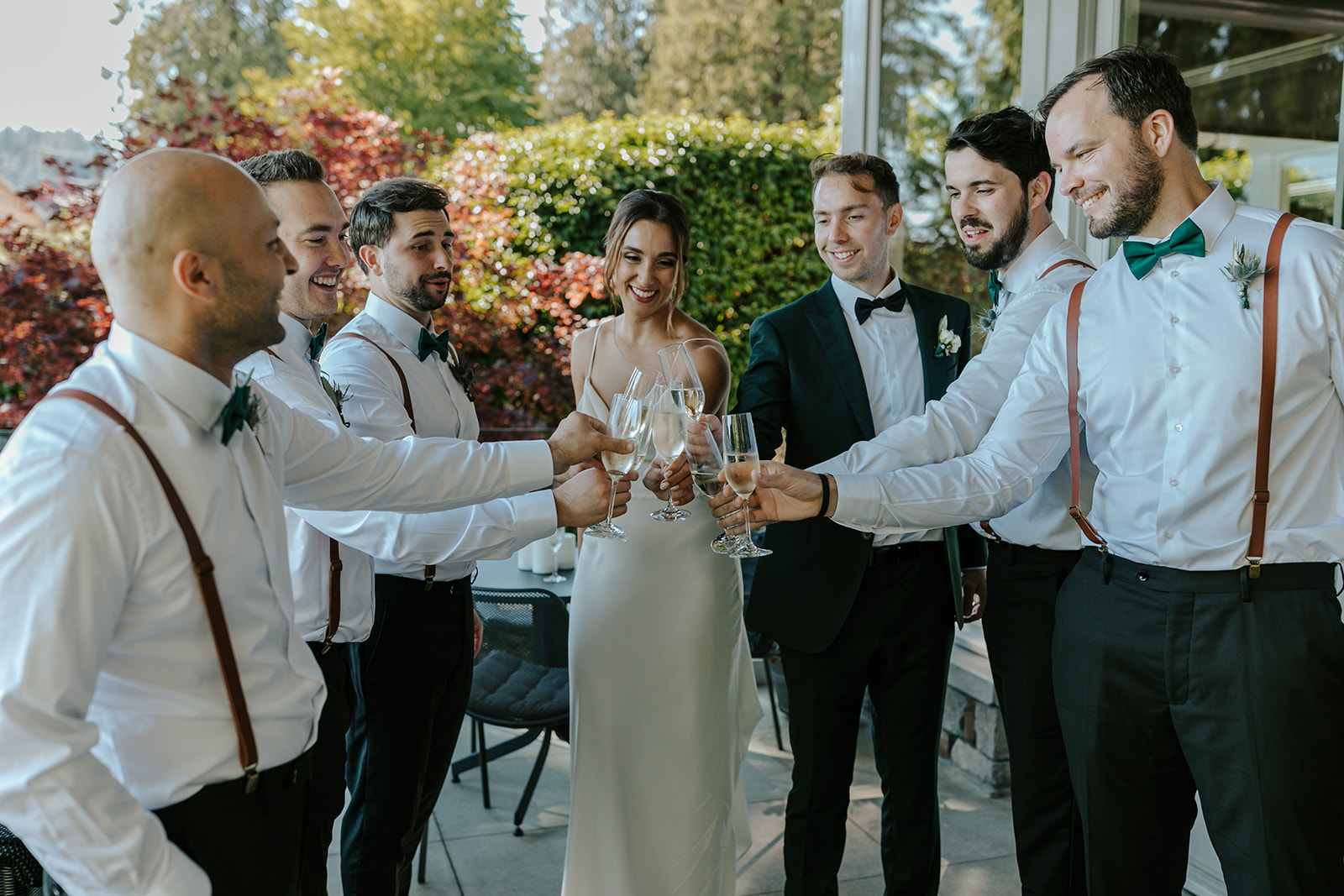
Wedding rehearsal timeline
Below is the timeline you can follow, from six months to the day of, to ensure your ceremony rehearsal goes off without a hitch!
3-6 months before the rehearsal:
Book your wedding rehearsal date & venue
The first step in your wedding rehearsal timeline is booking a time, date and place for your rehearsal. Ideally, you’re able to book your actual ceremony venue for the rehearsal and have the rehearsal a couple of days before your wedding. Chat with your ceremony venue to see if this is possible. If not, you’ll want to book or plan for another space and/or date.
Check availability with attendees
While booking your rehearsal space and time, you’ll want to make sure that date works for as many people involved in your ceremony as possible. This includes your wedding officiant, wedding planner, wedding party and anyone with a role in the ceremony.
Plan and book your rehearsal dinner
Once you have the date of your wedding rehearsal set and have confirmed everyone’s attendance, it’s a good idea to begin researching options for your rehearsal dinner (assuming it’ll be right after the ceremony rehearsal). You can keep things casual, such as a backyard BBQ at your house, or treat everyone to a fancy night on the town.
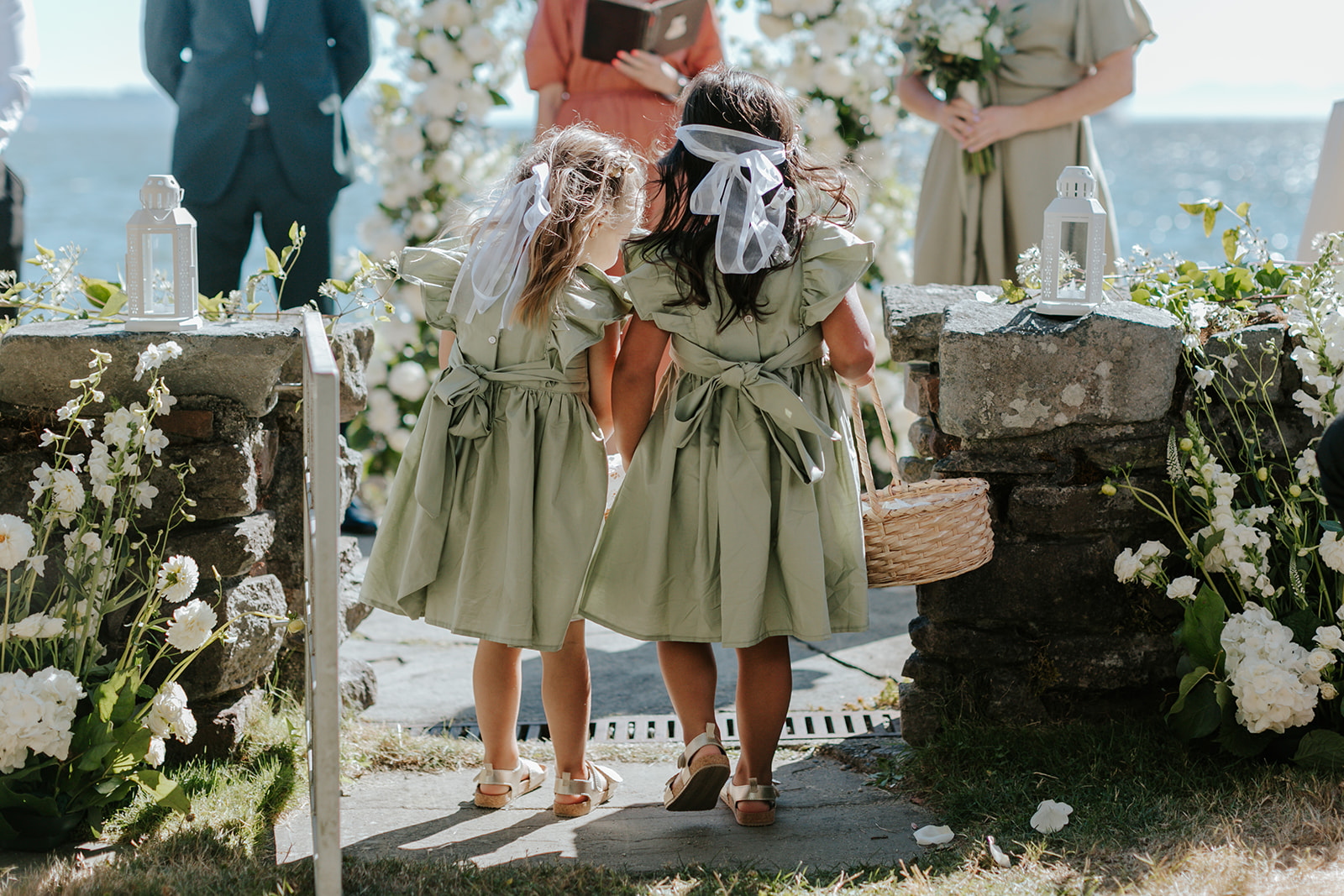
2-4 weeks before the rehearsal:
Confirm attendance
In the weeks leading up to your wedding rehearsal, re-confirm attendance with your wedding officiant, wedding planner, and everyone else who is scheduled to attend. You may also need to re-confirm with the venue and finalize reservations for your rehearsal dinner booking. Ensure everyone knows how to get to your rehearsal space and what time they’re supposed to be there.
Gather supplies
While you don’t need much more than the space and the people to run a wedding rehearsal, you may have some supplies you need to bring that are specific for your wedding. For example, you may want to bring your aisle runner, to practice walking on it, or the wagon that your ring bearers are going to sit in as they come down the aisle.
Make ceremony decisions
This is the part of the wedding timeline when you want to make all of your important ceremony decisions. Don’t wait to make these until you’re at your rehearsal! You’ll want to think about the processional order and how you’ll come down the aisle. You’ll also want to finalize other ceremony elements like readers, unity traditions, music, etc. If you’re not sure what decisions you need to make, take a look at your ceremony script and speak with your wedding officiant or wedding planner.
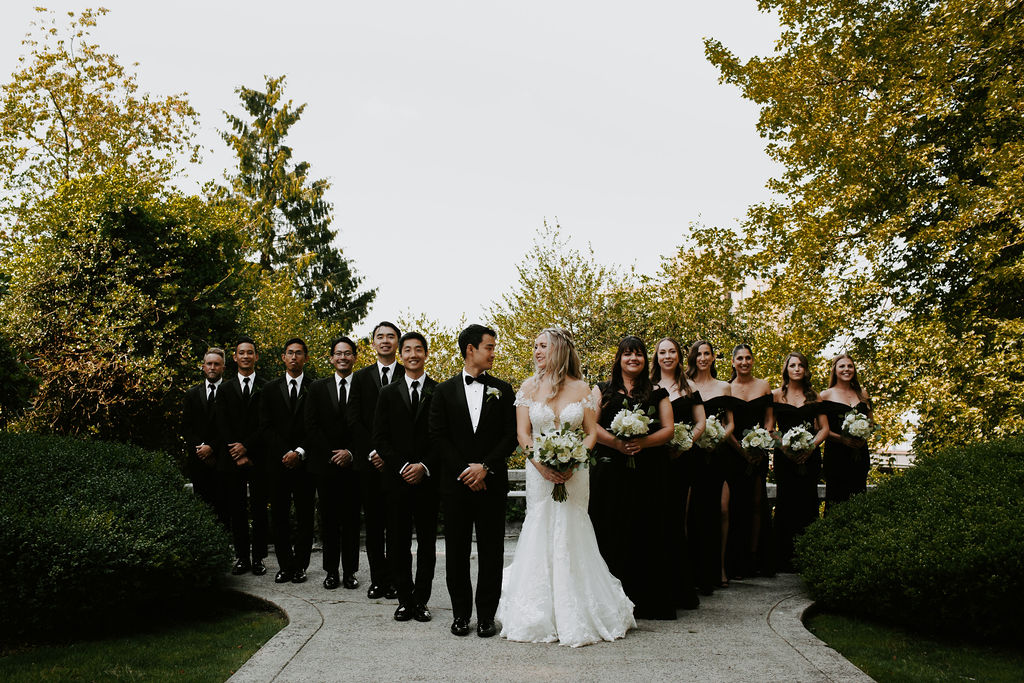
The day of your wedding rehearsal:
The day of your ceremony rehearsal is finally here! Check out this wedding rehearsal timeline that you can follow to ensure everyone knows what is going to happen on the big day:
Meet with your wedding officiant & wedding planner
Before the rehearsal gets underway, take a second to meet with your wedding officiant and wedding planner to ensure they have everything they need to run the rehearsal. You can quickly assess the space and make any adjustments, such as moving around chairs to create an aisle.
Introductions & overview
It’s time for the wedding rehearsal to start! Your wedding officiant and planner should introduce themselves to all of the attendees and explain how the rehearsal will go. This way, everyone understands what’s happening.
Walk-through with your wedding planner
Depending on your space and the vendors you’re working with, they may opt to do the “walk-through” or the “talk-through” first. The walk-through is generally led by your wedding planner and involves all of the movement during your ceremony; think of it as the blocking or choreography of the show.
Together with your wedding party you’ll walk through:
- Where you’re gathering before the processional
- The order for the processional
- How you’ll walk down the aisle (including musical cues, speed and spacing)
- Where you’ll stand at the front
- How you’ll walk back up the aisle for the recessional
- Where to go after the recessional
Ideally you’ll have already made all of the decisions, such as the order your wedding party enters in, before your rehearsal. The walk-through is just a chance to try it out, make any needed changes and pass instructions onto your party members.
Talk-through with your wedding officiant
Once you and your party have reached the end of the aisle, it’s time for your wedding officiant to take over for the “talk-through” part of the wedding rehearsal timeline. Your officiant will give a quick overview of the ceremony, going through the order of events so everyone knows what to expect on the big day.
As they outline the ceremony, your officiant will specifically call out any moments when things change or actions must be taken, so everyone knows what to do and when. These include:
- When the bouquet is handed off and who will hold it
- Who is holding the rings, when they’re given and if they’re handed to the officiant or the couple
- Who is holding the vows and when they are given to the couple
- When readers are called up and where they’ll stand for their readings
- When and where unity ceremonies are being done
- When and where the signing of the marriage licence is being done, and when witnesses will be called up
PS: Don’t worry, your wedding officiant won’t be reading your entire ceremony script nor will they ask you to say your vows during your ceremony rehearsal. That will all be saved for the big day!
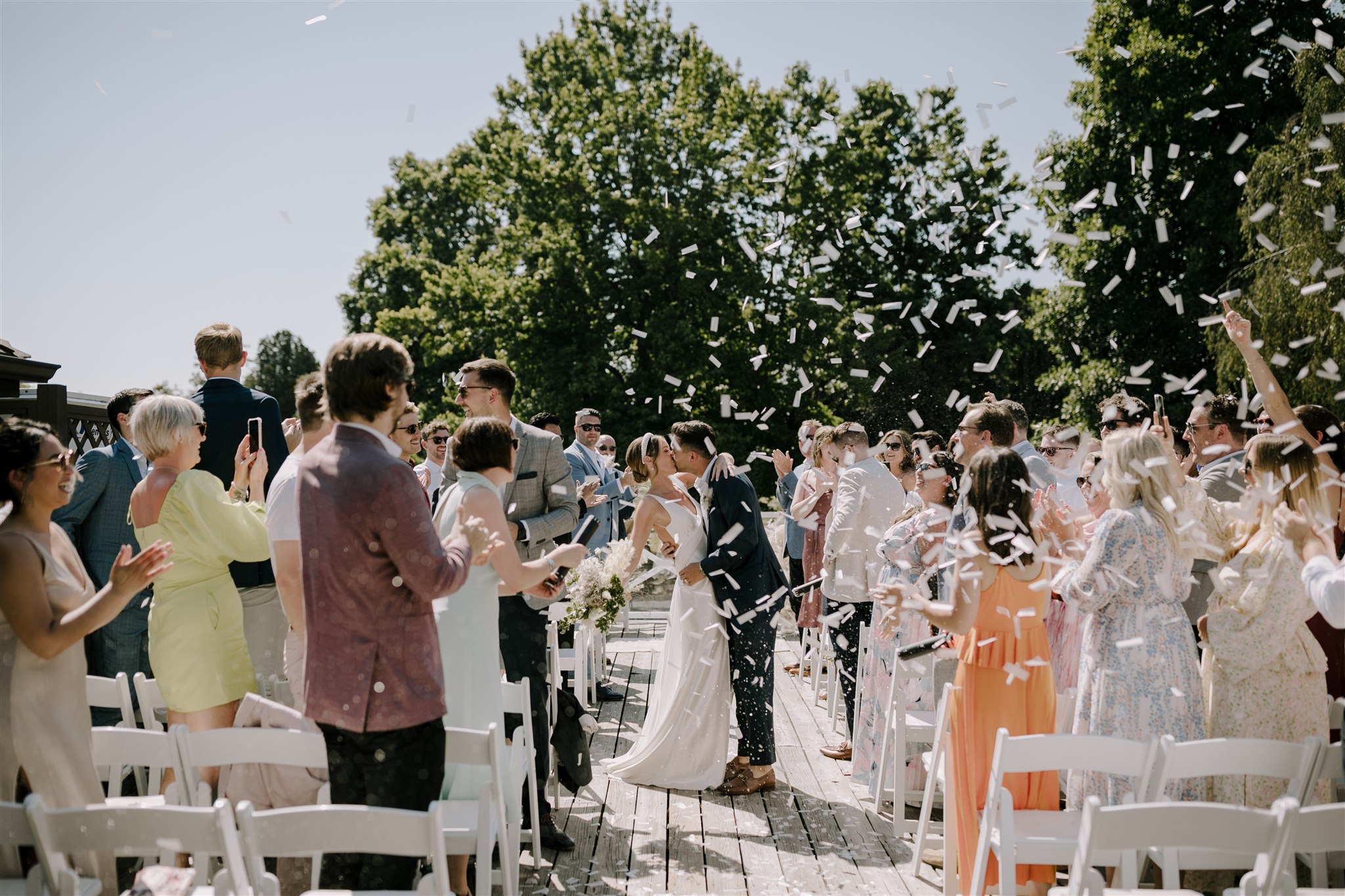
Run-through
Once you’ve completed the walk-through and talk-through with your officiant and planner, it’s time to run it! By now, everyone should have an idea of what is happening, when it’s happening, what they need to do and where they should be. The run-through is your chance to put everything you’ve learned into action and work out any kinks.
During the run-through, you’ll go through all of the motions of the walk-through and talk-through but without (or with less) direction from your wedding planner and wedding officiant. For example, instead of telling you what to do, your planner may just say “Music starts” which is your cue to begin processing down the aisle.
You may have to run it a few times before you’re able to do it without help. By your final run-through, everyone should be confident in what they’re doing and you shouldn’t have to stop the ceremony to ask questions.
Questions
After one or two run-throughs, and with everyone feeling good about their role in the ceremony, it’s time to start wrapping up your wedding rehearsal. Your wedding officiant and wedding planner should open up the floor for any final questions and share any last minute advice or reminders.
Rehearsal dinner
Congrats, you’ve reached the end of the wedding rehearsal timeline! Now that you’re fully rehearsed, it’s time to head off to your rehearsal dinner to celebrate.
Don’t forget to leave yourself some buffer time between the ceremony rehearsal and rehearsal dinner in case things take long, the rehearsal starts late, or you have to clean up the space. You’ll want to be able to focus on your rehearsal and not be worried about rushing to a dinner reservation.
Check out our wedding rehearsal FAQs for more rehearsal tips!
Did you know a wedding rehearsal is included in our Custom & Creative Ceremony Package?
In addition to a custom script written just for you, your Young Hip & Married wedding officiant will facilitate your wedding rehearsal and make sure everything is running smoothly.
